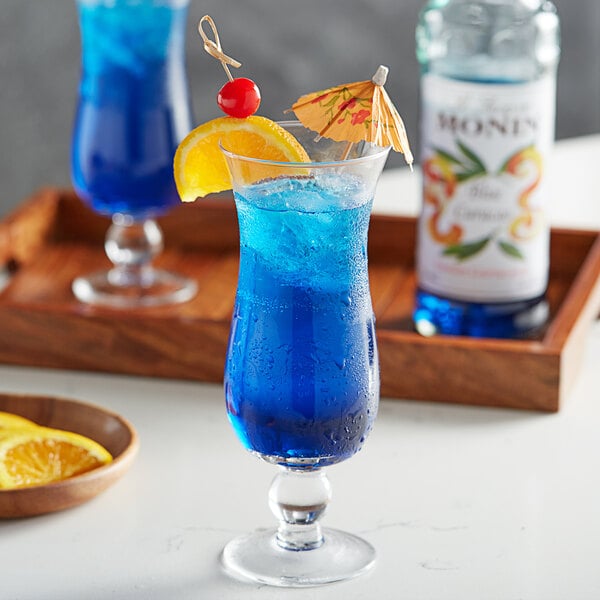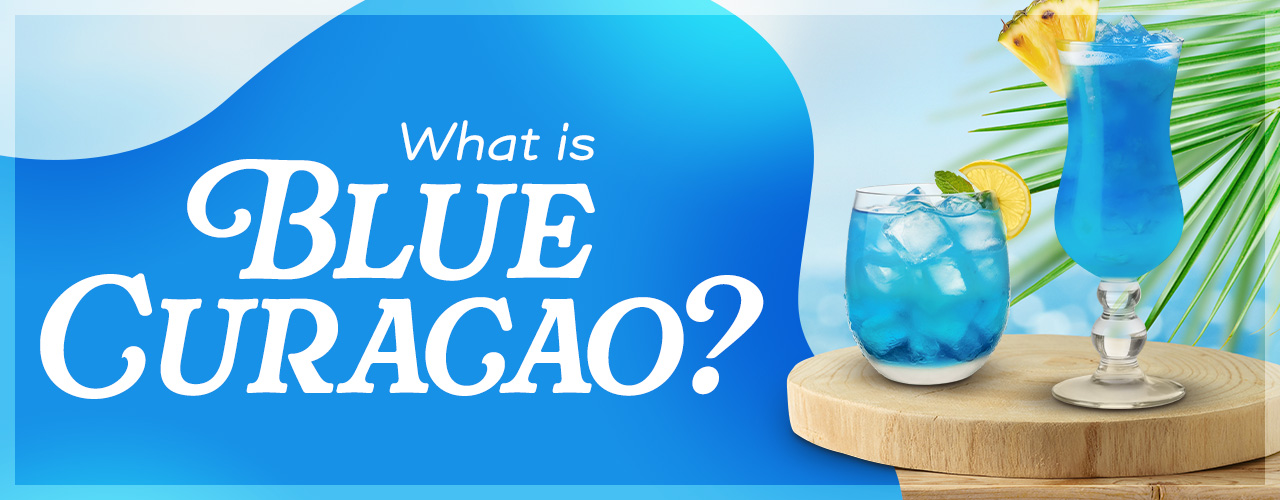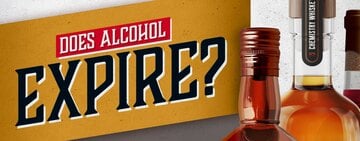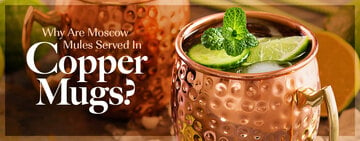Blue curacao is a versatile, citrus-flavored liqueur found in many tropical cocktails, such as the Blue Hawaii or Blue Lagoon. Its vibrant blue color adds a visually appealing touch to any drink, making it a popular choice for bartenders and mixologists. Originating from an island in the Caribbean, blue curacao has become a beloved cocktail ingredient that adds a unique twist to classic recipes. Whether you want to create a signature cocktail for your menu or add a splash of color to existing drinks, our guide to blue curacao explains its flavors, ingredients, pronunciation, and mixed drinks.
What Is Blue Curacao?

Blue curacao is a vibrant liqueur renowned for its distinct blue hue and citrus flavor. It is a type of curacao, a liqueur that originated from the island of Curacao in the Caribbean. Blue curacao is made by infusing the peels of the Laraha citrus fruit, which is native to Curacao, in alcohol to give the liqueur its citrusy aroma and taste. Additionally, blue curacao contains various herbs and spices, giving it a complex and refreshing flavor profile.
One of the defining features of blue curacao is its vivid blue color, which is achieved by adding food coloring to the liqueur. Though the vibrant blue color is not naturally present in the ingredients, it's a visual attraction when mixed into cocktails or other beverages. It is popular in tropical-themed or blue-colored cocktails, where it brings a touch of exoticism and enhances the overall presentation for summer happy hour events.
Some customer-favorite cocktails featuring blue curacao include the Blue Hawaii, Blue Margarita, and Blue Lagoon cocktails. Since the blue color of the liqueur doesn't affect the taste of the cocktail, you can add unique twists to classic beverages. Customers can enjoy blue curacao alone or with simple mixers like club soda or orange juice.
Is Blue Curacao Alcoholic?
Yes, blue curacao is a liqueur with moderate alcohol content. Though it varies depending on the brand, blue curacao has roughly 25% ABV. However, the ABV can range anywhere from 15% to 40%. Compared to other spirits like whiskey or rum, blue curacao’s alcohol content is relatively mild.
For vivid blue mocktails, use blue curacao syrup. This non-alcoholic bar mix is perfect for creating fun summer drinks all customers can enjoy.
How to Pronounce Curacao
Despite how it appears phonetically, curacao is pronounced: “kyoor-uh-sow.” For many customers, pronouncing the name of their favorite blue liqueur presents a dilemma that results in many hilarious pronunciations ranging from “blue carousel” to “blue cure-a-cow.”
What Does Blue Curacao Taste Like?
Blue curacao has a dominant orange, citrus flavor with a slightly bitter finish. It offers a tangy and refreshing experience stemming from the infusion of Laraha citrus fruit peels, which creates a vibrant and aromatic liqueur that adds a burst of citrus to any drink.
In addition to its citrus flavors, blue curacao brings a subtle sweetness that complements the tangy notes. This sweetness is not overwhelming, allowing the distinctive citrus flavors to shine through for a well-balanced and enjoyable taste. Moreover, blue curacao has a subtle bitterness that adds complexity to its flavor profile. Derived from herbs and spices, this bitterness provides a subtle contrast to the citrus and sweetness. This unique combination of citrus, sweetness, and bitterness makes blue curacao a versatile and distinct liqueur in various cocktails.
Blue Curacao Drinks

Adding blue curacao drinks to your cocktail menu appeals to customers looking for a refreshing beverage that reminds them of summer adventures. These blue curacao drinks look stunning and offer a range of flavors to suit any palate. Whether you're hosting a tropical-themed event or want to add a pop of color to your cocktail offerings, these blue curacao cocktails are perfect choices to elevate your drink menu.
- Blue Lagoon: This tropical cocktail combines blue curacao with vodka and lemonade, creating a refreshing and visually stunning drink reminiscent of crystal-clear waters. Garnish with a slice of lemon, an umbrella, or a maraschino cherry for an extra touch of elegance.
- Blue Hawaii: Straight from paradise, a Blue Hawaii is a classic tiki cocktail. Blue curacao, rum, pineapple juice, and coconut cream combine to create a sweet, tangy drink that reminds customers of sunbathing on a beach.
- Blue Margarita: Put a colorful twist on the beloved margarita by adding a splash of blue curacao. Mix tequila, lime juice, and blue curacao for a vibrant and zesty cocktail perfect for summer happy hour or beach-themed events.
- Aqua Velva: The Aqua Velva is a sweet, sophisticated cocktail. Combining gin, blue curacao, lemon juice, and tonic water, this drink is visually appealing and refreshing.
- Blue Long Island Iced Tea: Take the classic long island iced tea recipe and add a splash of blue curacao for a fresh drink with less alcohol than a traditional cocktail. This potent and flavorful drink combines vodka, rum, tequila, gin, blue curacao, lemon juice, and a splash of ginger ale for a memorable drink.
- Lake Water: For a non-traditional blue curacao cocktail, you can’t go wrong with a Lake Water drink. This drink combines vodka, gin, tequila, rum, triple sec, melon liqueur, raspberry liqueur, blue curacao, sweet and sour, and an orange slice or peel as garnish for a delicious cocktail. Substitute pineapple juice for the fruit liqueurs for a unique twist.
Blue Curacao vs Triple Sec
Curacao and triple sec are both orange-flavored, clear liqueurs with moderate alcohol content, making them excellent substitutes for each other. Both spirits can be enjoyed alone or mixed into a cocktail and provide a citrus, slightly bitter flavor to drinks. Adding some blue food dye to triple sec makes it nearly indistinguishable from blue curacao, but the liqueurs have a few key differences.
Originating in France, triple sec uses Valencia oranges to infuse the citrus flavor into the liqueur. It is made with a neutral spirit distilled from sugar beets, resulting in a clear color and sharper taste. However, curacao is distilled with Cognac or brandy to form a sweeter, darker drink than triple sec. Overall, curacao is tangy and sweeter than triple sec, but the difference in flavor is hard to notice in mixed drinks.
Substitutes for Blue Curacao

The best substitute for blue curacao is clear curacao with some blue food coloring. Clear curacao allows you to maintain the same flavor as blue curacao, but the color might be slightly different. You can use orange zest, which is non-alcoholic but still provides the citrus flavor of blue curacao. Several other types of liqueurs are also excellent substitutes for blue curacao if you add blue food dye.
- Triple Sec: Known for its orange, tangy flavor, triple sec adds a similar citrusy flavor profile to your drinks. Use triple sec in margaritas and cosmopolitans.
- Grand Marnier: Another premium French liqueur, Grand Marnier combines Cognac with bitter orange flavors to offer a complex taste. Although it won't give you the blue color, Grand Marnier can add a touch of sophistication to your cocktails.
- Cointreau L’Unique: With a balanced sweetness and intense orange flavor, Cointreau L'Unique is a high-quality orange liqueur that can be a suitable replacement for blue curacao. This French liqueur can add a delightful citrusy twist to your drinks.
- Clement Creole Shrubb: If you're feeling adventurous, consider using Clement Creole Shrubb as a substitute for blue curacao. This unique liqueur blends aged rum, Creole spices, and bitter orange peels, and it will elevate your cocktails to the next level.
Blue curacao is a vibrant and flavorful liqueur that adds a splash of color to cocktails. This bright blue citrus liqueur is a versatile ingredient used in various drinks ranging from classic favorites like the Blue Hawaiian and the Blue Margarita to creative concoctions like the Lake Water and the Blue Lagoon. Whether you’re overhauling your menu or planning a beach-themed event, blue curacao is sure to appeal to a wide variety of customers.








